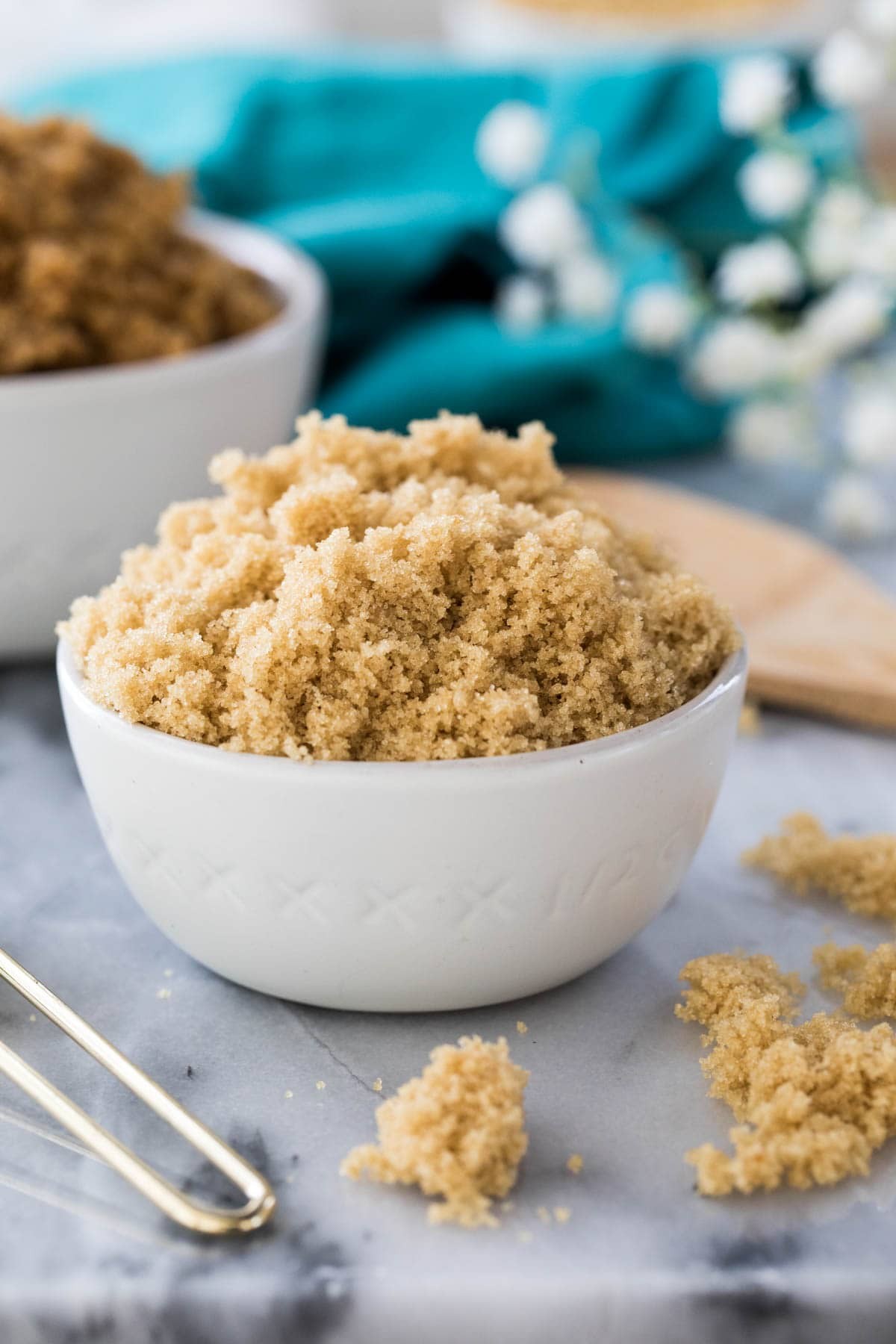Have you ever been in the middle of baking your favorite cookies or cake, only to discover you’re completely out of brown sugar? It’s a common kitchen dilemma! While granulated sugar might seem like a close substitute, it lacks the distinct flavor and moisture that brown sugar brings to recipes. Don’t worry, there’s a quick and easy solution that saves you a trip to the grocery store.
If you have granulated sugar and molasses in your pantry, you’re in luck! In under 5 minutes, you can learn How To Make Brown Sugar right in your own kitchen. This isn’t just a makeshift substitute; it’s the real deal – authentic brown sugar that you can use in any recipe calling for it.
This homemade brown sugar works perfectly in any recipe, from cookies and cakes to savory dishes. It’s also fantastic to make ahead and store, ensuring you always have some on hand when you need it.
What You Need to Make Brown Sugar
The beauty of this recipe lies in its simplicity. You only need two basic ingredients to create brown sugar at home.
- Granulated Sugar: Ordinary white sugar forms the foundation of our homemade brown sugar.
- Unsulphured Molasses: This is the key ingredient that gives brown sugar its characteristic moistness, slight stickiness, and rich brown color. Molasses is essential for achieving the authentic flavor and texture of brown sugar. We’ll discuss alternatives if you don’t have molasses in the FAQ section below, but for true brown sugar, molasses is the way to go.
Step-by-Step Guide: How to Make Brown Sugar
Making brown sugar at home is incredibly straightforward and doesn’t require any special equipment. All you need is a mixing bowl and a spoon or spatula.
-
Combine Sugar and Molasses: In a mixing bowl, measure out your granulated sugar and add the molasses. The ratio will determine whether you make light or dark brown sugar (we’ll cover this shortly). For standard light brown sugar, use the ratio in the recipe card below.
-
Mix Thoroughly: Use a spatula or spoon to stir the sugar and molasses together. Initially, the molasses will clump and form small balls within the sugar.
-
Break Up Clumps: To ensure a smooth, uniform brown sugar, use your spatula to press the molasses clumps against the side of the mixing bowl. Grind the clumps between the spatula and the bowl until they break down and are fully incorporated into the sugar.
-
Continue Mixing: Keep mixing until the sugar is a cohesive, even brown color and no clumps of molasses remain. Your homemade brown sugar is now ready to use!
Frequently Asked Questions About Homemade Brown Sugar
Is this really a brown sugar substitute?
Yes! This is not just a substitute; it is brown sugar. By combining granulated sugar with molasses, you are recreating brown sugar from scratch. So, if you find yourself without brown sugar while baking, this method provides a perfect homemade solution. You can make either light or dark brown sugar depending on the ratio of molasses you use.
How should I store homemade brown sugar?
For optimal freshness and to prevent hardening, store your homemade brown sugar in an airtight container. A Ziploc bag is an excellent option as you can easily press out excess air. Removing air is crucial to maintaining its soft, moist texture. Stored properly, it will keep for several months or even longer.
Why does brown sugar become hard?
Exposure to air is the primary reason brown sugar hardens. The moisture in brown sugar evaporates when exposed to air, causing the sugar crystals to bind together and solidify. To prevent this, minimize air exposure during storage. If using a container like Tupperware, pressing a piece of plastic wrap directly onto the surface of the sugar before sealing the lid can help.
How do I soften hardened brown sugar?
If your brown sugar has hardened, don’t worry, it’s easily fixable! A simple trick is to place a slice of bread in the airtight container with the hardened sugar. Within a few hours, the brown sugar will draw moisture from the bread and soften. The bread will become hard, but your brown sugar will be soft and ready to use again.
Can I make brown sugar without molasses?
While molasses is essential for authentic brown sugar, some alternatives can work in a pinch, though they won’t technically be true brown sugar. Many bakers have reported success using maple syrup or buckwheat honey as substitutes. If using these, do a 1:1 substitution for molasses. The resulting sugar will be lighter in color and have a slightly different flavor profile due to the distinct tastes of maple syrup and honey. However, in many recipes, these substitutions can work well when you’re in a bind.
Light Brown Sugar vs. Dark Brown Sugar
The difference between light and dark brown sugar comes down to the amount of molasses used. Light brown sugar contains less molasses (around 3.5% by weight), while dark brown sugar has a higher molasses content (around 6.5% by weight). This difference in molasses affects not only the color but also the flavor and moisture content. Dark brown sugar is richer in flavor and more moist than light brown sugar due to the increased molasses.
This recipe primarily guides you on how to make light brown sugar. To make dark brown sugar simply increase the amount of molasses. The recipe card below provides instructions for both light and dark brown sugar variations.
Brown Sugar: More Than Just a Substitute
Knowing how to make brown sugar at home is a valuable skill for any baker or home cook. It ensures you’re never caught short in the middle of a recipe and allows you to control the freshness and quality of your ingredients. Use your freshly made brown sugar in classic recipes like chocolate chip cookies, gingerbread, or even savory marinades and sauces. Once you realize how easy it is to make, you might just prefer homemade brown sugar over store-bought!
So, next time you’re about to bake and discover you’re out of brown sugar, remember this simple 2-ingredient recipe. You’ll be back to baking in minutes!

